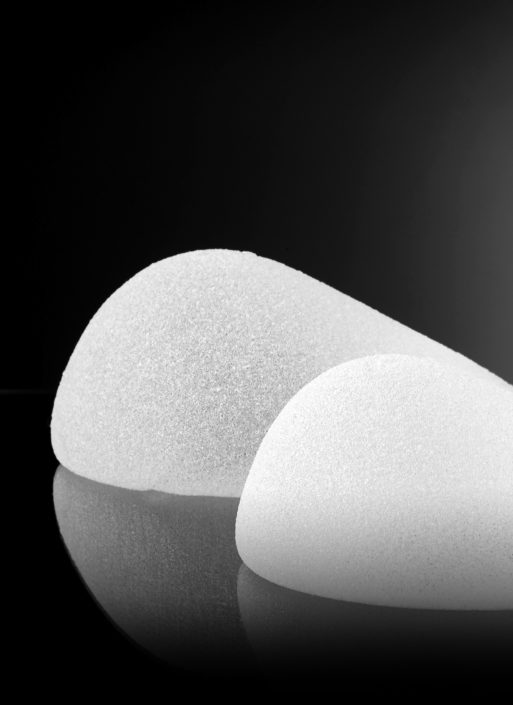
Breast-prosthesis replacement
Breast implants are only replaced in the event of wear and tear and/or rupture, or if patients want to change the volume and/or shape of their breasts.
Prostheses must therefore be changed in the event of complications, whether these are asymptomatic or symptomatic (pain, inflammation, change of shape).
There may be wear and tear with leakage or leakage without obvious rupture (the ‘sweating’ phenomenon of old prostheses).
But leakage may not be detected immediately, or only when breasts become painful and/or inflamed (with physiological serum implants, there will be a rapid loss of volume).
Complications are now much rarer thanks to the latest generation of cohesive silicone-gel implants, which are safe and hard-wearing.
ADDED EXTRA
Next Motion is an application that enables doctors to create, edit and share perfectly standardized, comparable dynamic ‘before/after’ videos in less than a minute.
The CSMCE has chosen this innovative technology, enabling completely transparent progress in patient care and fostering a trusting relationship with practitioners.
QUESTIONS/ANSWERS
- Is this a painful intervention?
No, because simply changing an implant in a breast-implant pocket already created during the first intervention is much faster, with no significant detachment required. - When is the right time to change breast prostheses?
Although implant quality is improving all the time, any material inevitably wears out over time. The average life span, and hence right time to change them, is after about 12 years for silicone implants and 8 years for physiological serum implants. - Is any special monitoring required?
Regular clinical (by a gynaecologist or plastic surgeon) and radiological (ultrasound) monitoring must be carried out at least every 2 years, as after any breast-implant insertion.
Useful information
Before the intervention
- Two consultations need to be arranged: one with the plastic surgeon and the other with the anaesthetist.
- You will be given a quote and a mutual informed consent form, which must both be signed before the intervention.
- Stop smoking for 1 month before and after the intervention.
- Do not take aspirin (except for cardiovascular indications to be discussed with your cardiologist and/or anaesthetist) for 10 days before the intervention.
- Do not take anti-inflammatory drugs for 10 days before the intervention.
- Shaving is not obligatory but is recommended if an axillary route is used.
- Pre-operative photographs are taken.
- 15-day medico-legal reflection period (which cannot be shortened) between the 1st consultation and the intervention.
Day of the intervention
- General anaesthetic.
- Duration of the intervention: 1-3 hours on average, depending on the work on the breast-implant pocket (capsulotomy, capsulectomy, or capsulorraphy)
- You can go home the same day (outpatient procedure) or after 1 night on average in hospital.
After the intervention
- Gently dry the dressings with a hair dryer after every shower.
- Wear a compression bra day and night for 1 month.
- Oedema for 1-2 weeks.
- Return to work: after 1-10 days on average, depending on your work environment.
- Resume sport: after 4 weeks.
- Final result obtained: after 1-2 months.
- Consultations after 15 days, 3 months and 12 months for a clinical check-up and to take post-operative photographs.
- Regular clinical (by a gynaecologist or plastic surgeon) and radiological (ultrasound) monitoring must be carried out at least every 2 years, as after any breast-implant insertion.
Prices
- Breast-prosthesis replacementFrom 6,000 CHF

